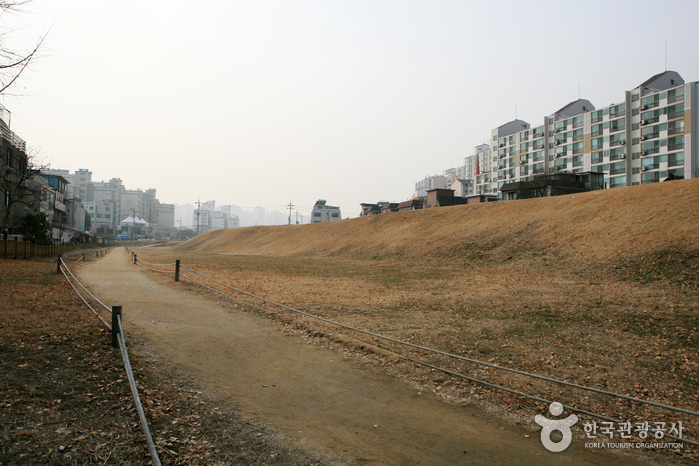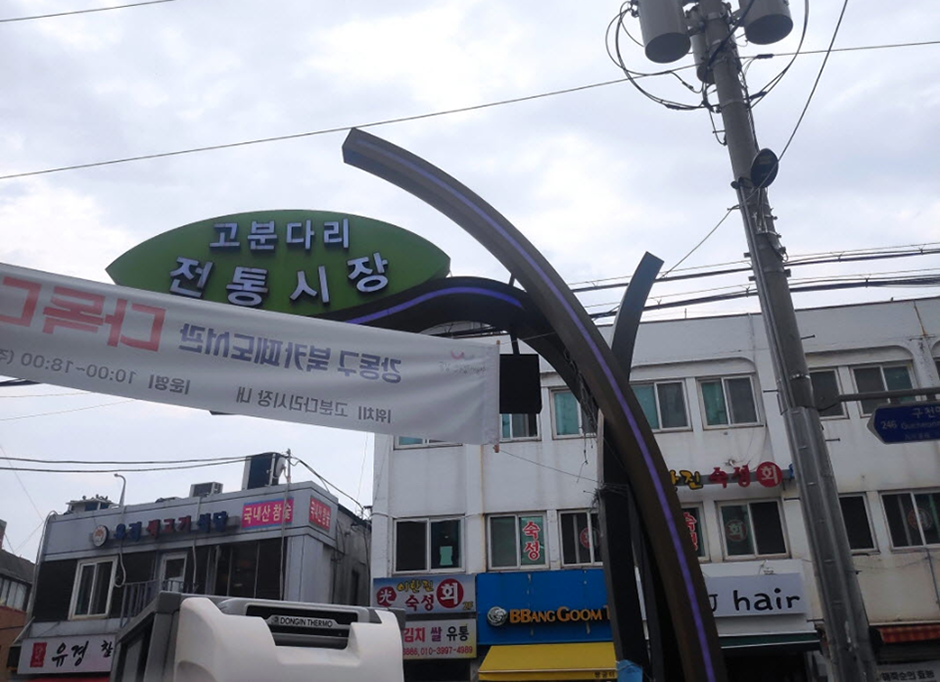Tod’S - Hyundai Cheonho Branch [Tax Refund Shop] (토즈 현대 천호점)
1.9Km 2024-04-18
1005, Cheonho-daero, Gangdong-gu, Seoul
-
Hyundai Department Store - Cheonho Branch [Tax Refund Shop] (현대백화점 천호)
1.9Km 2024-04-22
1005, Cheonho-daero, Gangdong-gu, Seoul
-
Pungnap-dong Toseong Fortress (서울 풍납동 토성)
1.9Km 2025-01-10
Pungnap-dong, Songpa-gu, Seoul
+82-2-2147-2800
Onjo, the progenitor of Kingdom Baekje, first settled in Wiryeseong Hanam. But exact location is still unknown. One thing for sure, however, is that Pungnaptoseong Fortress, Mongchontoseong Fortress, Bangidong Ancient Tombs of Baekje, Seokchondong Stone Mound Tomb of Early Baekje are the remains of Baekje. Pungnaptoseong Fortress faces Hangang River to its west and connects to Mongchontoseong Fortress to the south. To the northwest faces Achasanseong Fortress over Hangang River and far to the southeast is Namhansanseong Fortress.
Pungnaptoseong Fortress, located at the south end of Cheonhodaegyo Bridge over Hangang River, is one of the remains of Early Baekje. Originally, the fortress was 4km in circumference, but due to massive overflowing of Hangang River during flood season in 1925, most of the fortress was lost and only 2.7km of it remains. To the east of the fortress are 4 vestiges of the fortress gates. The remains from the prehistoric era through the Samguk (Three States) era have been unearthed, indicating that this place was a residential area well before the Baekje Era. Through vigorous excavation, some people suggest that there used to be a palace located here during the Baekje Era.
Enter 6 - Cheonho Station Branch [Tax Refund Shop] (㈜엔터식스패션쇼핑몰 천호역점)
2.0Km 2024-04-19
B1, Cheonho Station of Subway Line 5, 8, 997, Cheonho-daero, Gangdong-gu, Seoul
-
Songwol Naengmyeon (송월냉면)
2.0Km 2023-12-22
26 Gucheonmyeon-ro 29-gil, Gangdong-gu, Seoul
Songwol Naengmyeon is a cold noodle restaurant passed down for two generations, from 1988 to the present. It is a restaurant specializing in naengmyeon, or cold buckwheat noodles. It has three simple menu items: yeolmu naengmyeon (cold buckwheat noodles with young summer radish kimchi), mul naengmyeon (cold buckwheat noodles), and bibim naengmyeon (spicy buckwheat noodles). Yeolmu is the stem of young radish and is used as an ingredient in kimchi, one of the traditional Korean fermented foods, as well as salads, naengmyeon, and bibimbap. Harvest usually begins in early summer, so it can often be found on dinner tables in the summer. The combination of naengmyeon with ice, young radish, and cool dongchimi (radish water kimchi) creates a wholesome and refreshing taste. This restaurant is also popular among locals and visitors may have to wait in line during peak hours, but manages their table turnover in an organized fashion so their customers in queue won’t have to wait for too long.
Eoyang (어양)
2.0Km 2021-03-29
14, Wiryeseong-daero, Songpa-gu, Seoul
+82-2-422-8886
The kitchen staff trained in a famous Chinese hotel restaurant serve the best Chinese cuisine. The best menu at this restaurant is sizzling rice soup with seafood. This Chinese (cuisine) restaurant is located in Songpa-gu, Seoul.
Gobundari Market (고분다리 전통시장)
2.1Km 2023-12-22
8 Gucheonmyeon-ro 34-gil, Gangdong-gu, Seoul
Gobundari Market is a traditional market that takes care of food, clothing, and shelter for residents in Cheonho-dong. Because it is located in the center of the neighborhood, it is also a market where one can get a closer look into the daily lives of locals. One characteristic that stands out from this traditional market is none other than the murals. Murals of various themes that decorate the market area add eclectic energy to the quaint neighborhood. Like any other traditional markets, there are stores where visitors can purchase Koreans’ all-time favorite snacks.

![Hyundai Department Store - Cheonho Branch [Tax Refund Shop] (현대백화점 천호)](http://tong.visitkorea.or.kr/cms/resource/98/2887998_image2_1.jpg)

![KL [Tax Refund Shop] (Kl)](http://tong.visitkorea.or.kr/cms/resource/64/2878864_image2_1.jpg)
![Alto [Tax Refund Shop] (알토)](http://tong.visitkorea.or.kr/cms/resource/65/2878865_image2_1.jpg)
![Valleygirl [Tax Refund Shop] (벨리걸)](http://tong.visitkorea.or.kr/cms/resource/20/3314320_image2_1.jpg)

 English
English
 한국어
한국어 日本語
日本語 中文(简体)
中文(简体) Deutsch
Deutsch Français
Français Español
Español Русский
Русский